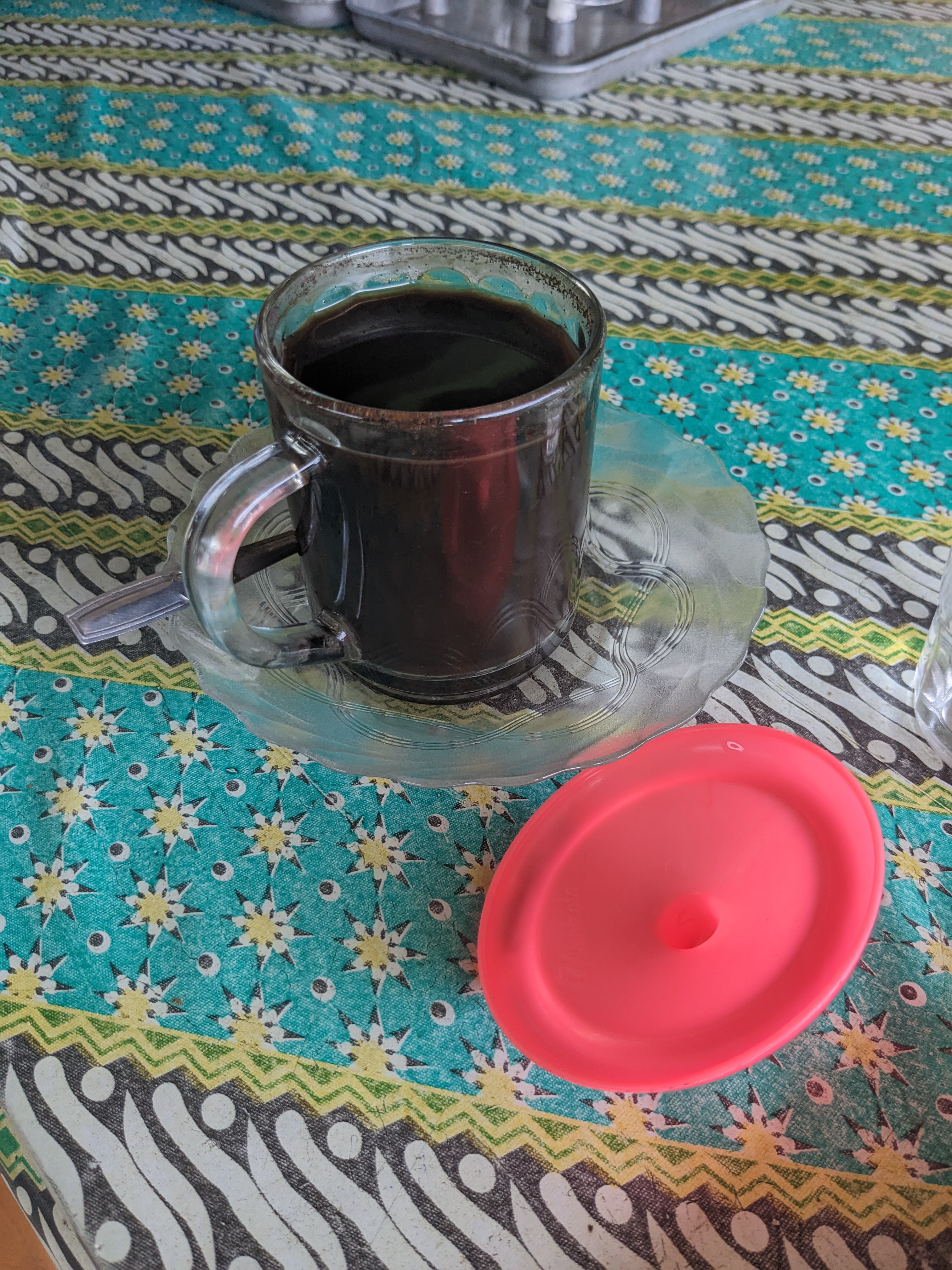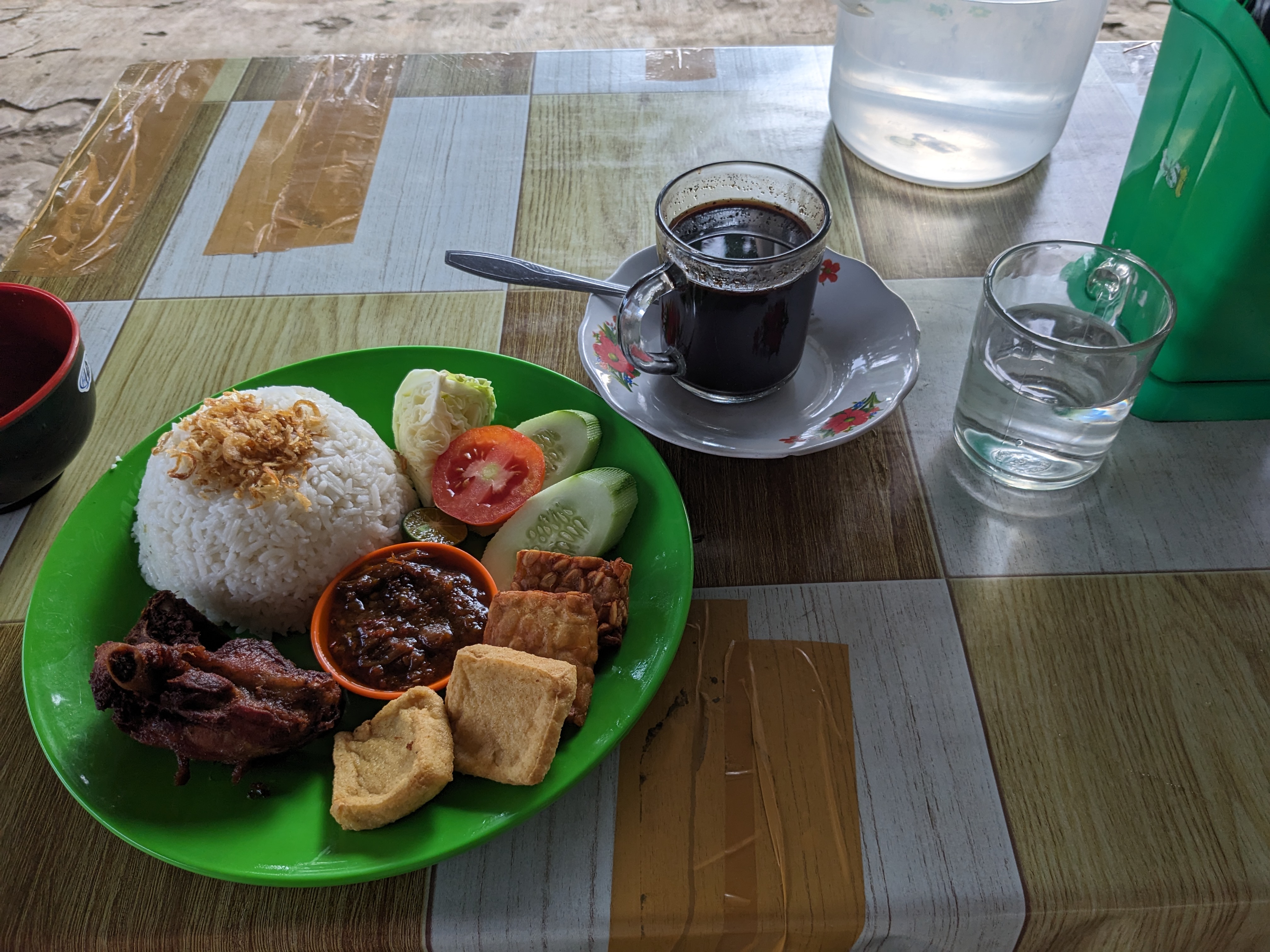Getting the ferry to the island of Sumatra from Malaysia turned out to be a bit stressful due to my oversight of arriving at the ferry port with no local currency, just assuming they would accept card. Fortunately, Nathan lent me some cash and I managed to scrape by with my remaining USD, barely enough to cover the ferry fare, baggage, and my Indonesian visa.

The chaos continued at the arrival port, where bags were haphazardly thrown from the ferry, and I had to scramble to retrieve all my baggage and bike. After navigating a straightforward visa process, I had to unpack everything for an x-ray scan.
Dumai, my entry point to Sumatra, was a bustling and intense city. Upon leaving the ferry port, I quickly found a bank and food shop but annoyingly couldn’t set my phone up with an Indonesian sim despite a kind man driving me on the back of his motorbike to 5 different phone shops. The problem being my international phone wasn’t registered in the country, so I’d just have to rely on finding wifi in places.
Indonesia marked the final leg of my journey. I had a 30-day visa and a flight booked from Bali to Sydney in exactly 30 days. It was probably going to be too ambitious to cycle all the way, or at least result in me missing some of the highlights, so I planned to take at least one bus to skip some sections.
The people in Indonesia were the friendliest I’d encountered anywhere, often shouting at me with enthusiastic “hello mister!” greetings. While heartwarming, it often became annoying when occurring every 30 seconds through towns and when I’d find Wi-Fi, then get interrupted with people asking for photos or wanting to talk.

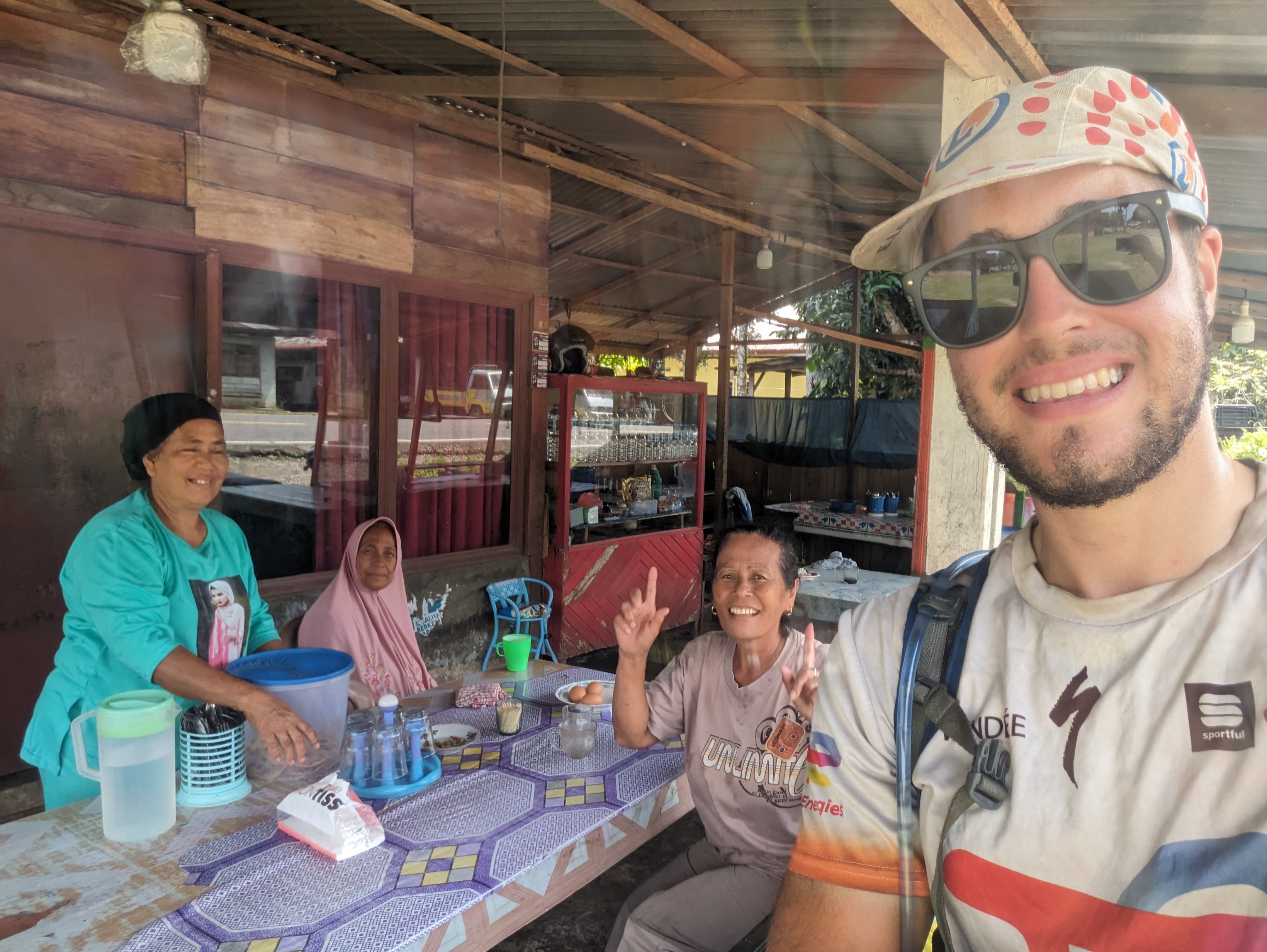
It was also still the rainy season, so I encountered daily downpours, typically starting around 3 pm and lasting into the night. In urban areas like Pikanburu, the streets often turned into rivers creating awful traffic.

One notable difference in Indonesia from other countries was the acceptability of sleeping anywhere, such as truck stops or cafes, which were often open 24 hours a day. However, the downside was occasional disturbances, such as people watching loud videos at 3 am. There were also many abandoned buildings to shelter in each night. I also spent nights at mosques, although the early morning call to prayer disrupted my sleep, but the benefits of clean toilets and showers generally out-weighted this.


The buildings were an interesting style with pointed roofs. Something I didn’t see anywhere else.




Heading towards the west coast, I traversed mountains and encountered the iconic Kelok 9, an impressive stretch of road.

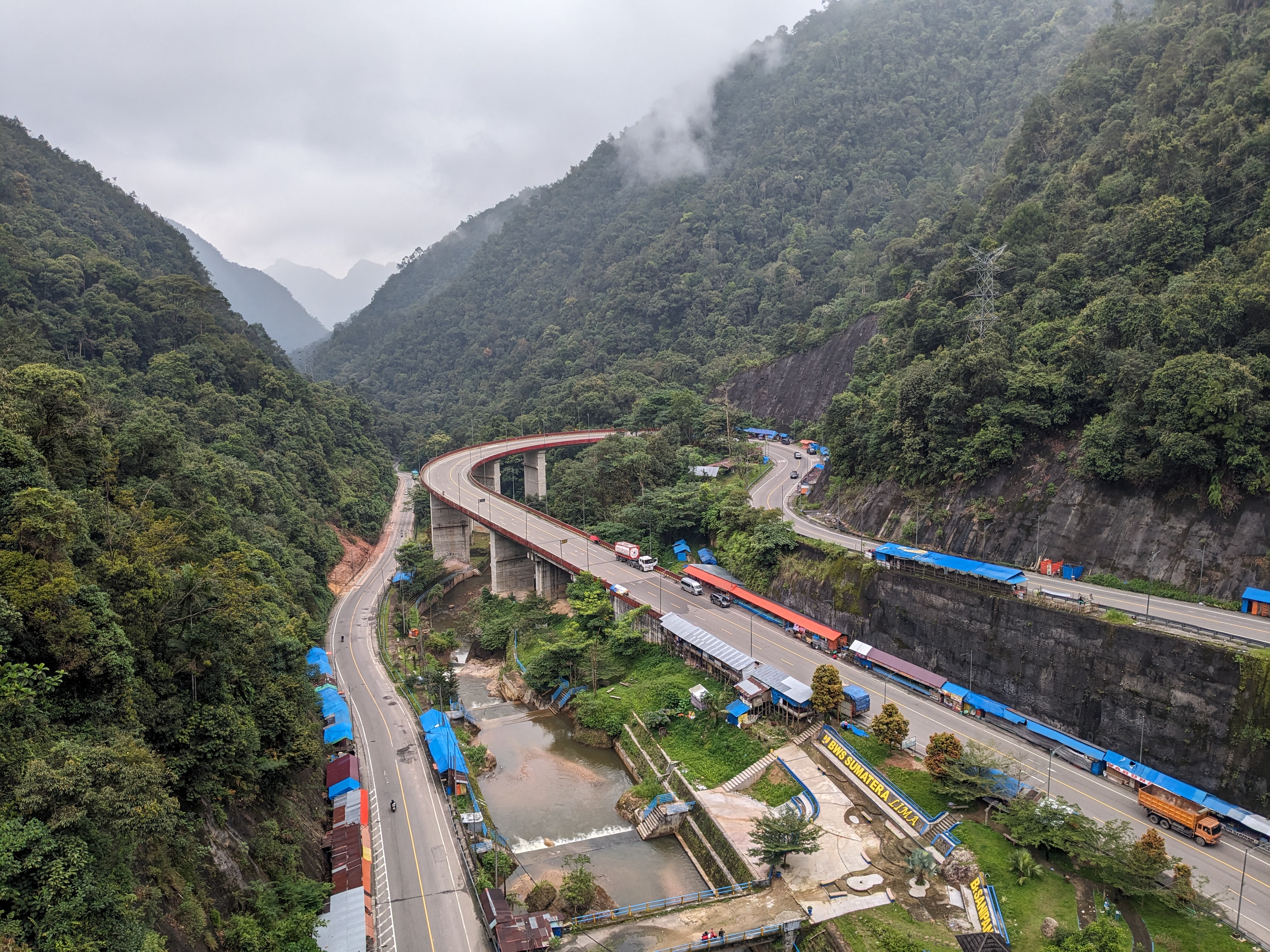

From here, the road descended into the city of Penang, passing some amazing lakes.

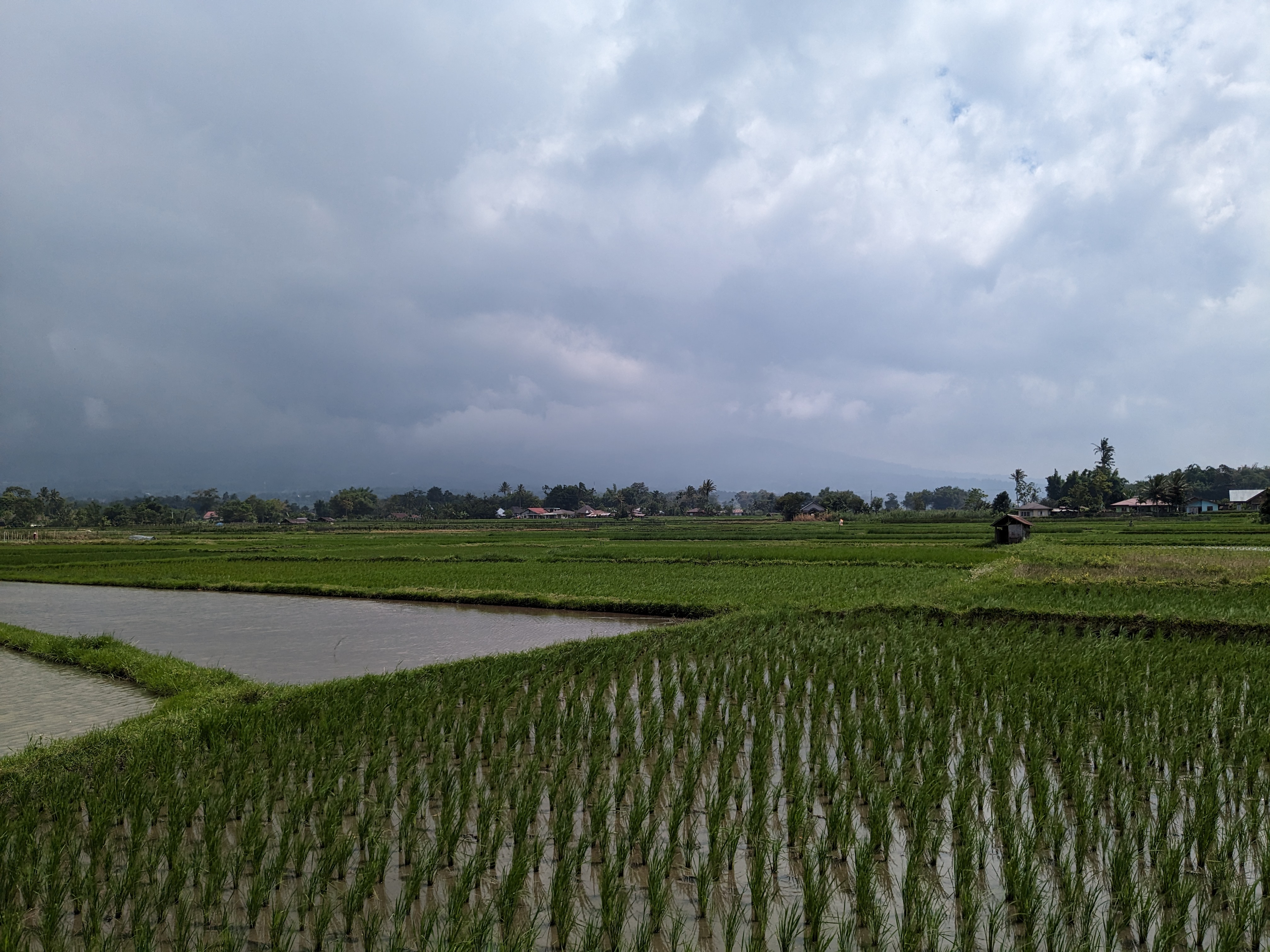
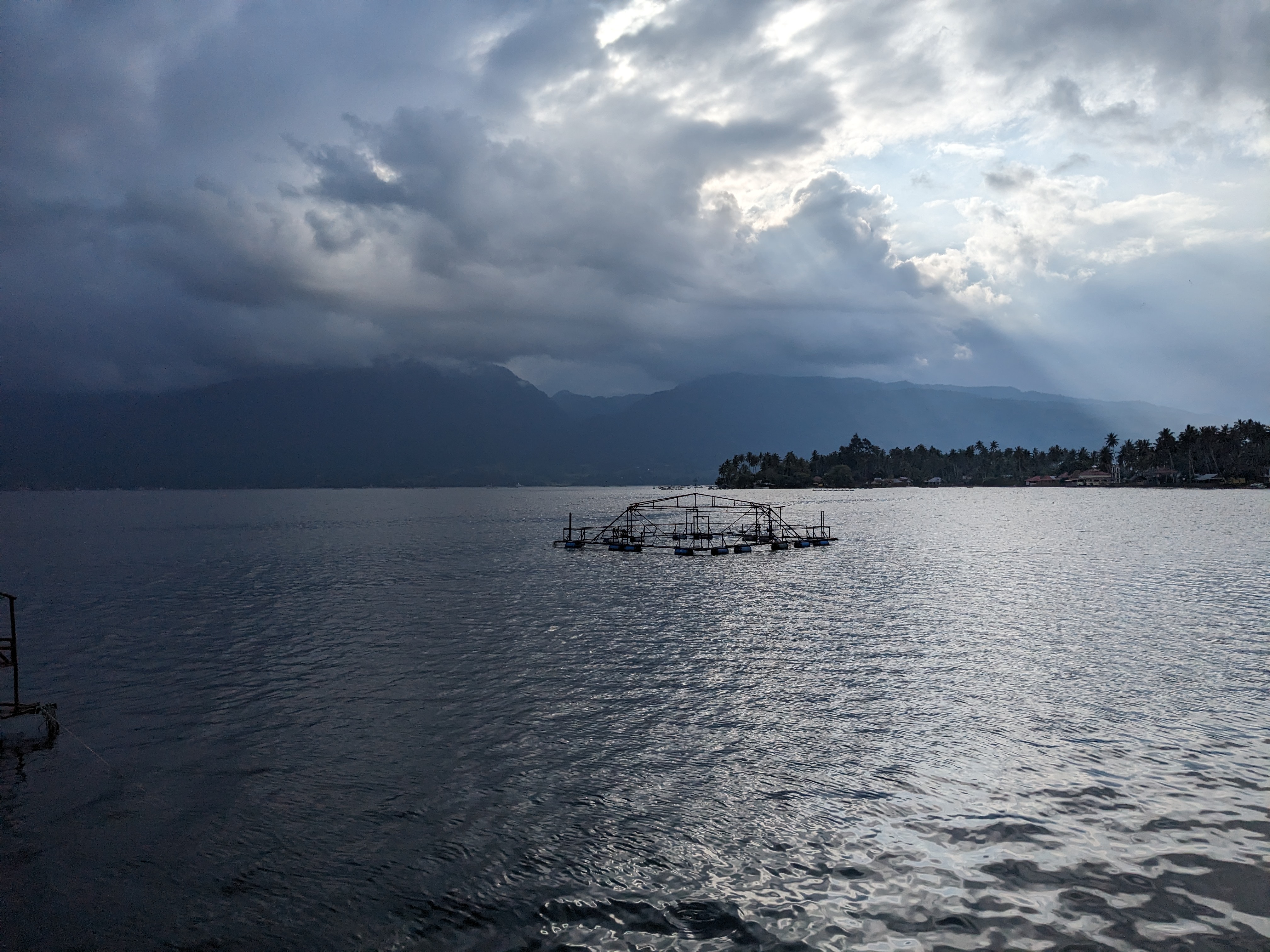


The traffic has probably been the worst of anywhere so far. With the roads just being constant streams of motorbikes. In addition at all the junctions, men would be directing traffic taking payment before walking out into the road stopping the traffic for anyone trying to turn right. Every car was pretty much forced to pay them as they wouldn’t be able to turn otherwise.
Along the coast, I sought shelter and food at a waterfront restaurant, where I met Donnie, a woodcarver who generously offered me a place to stay at his home. He spoke good english, having learnt it using TikTok. I shared a very spicy meal with his family, and he showed me around the house they’d built. The next morning, Donnie took me on his motorbike into his town to get breakfast.



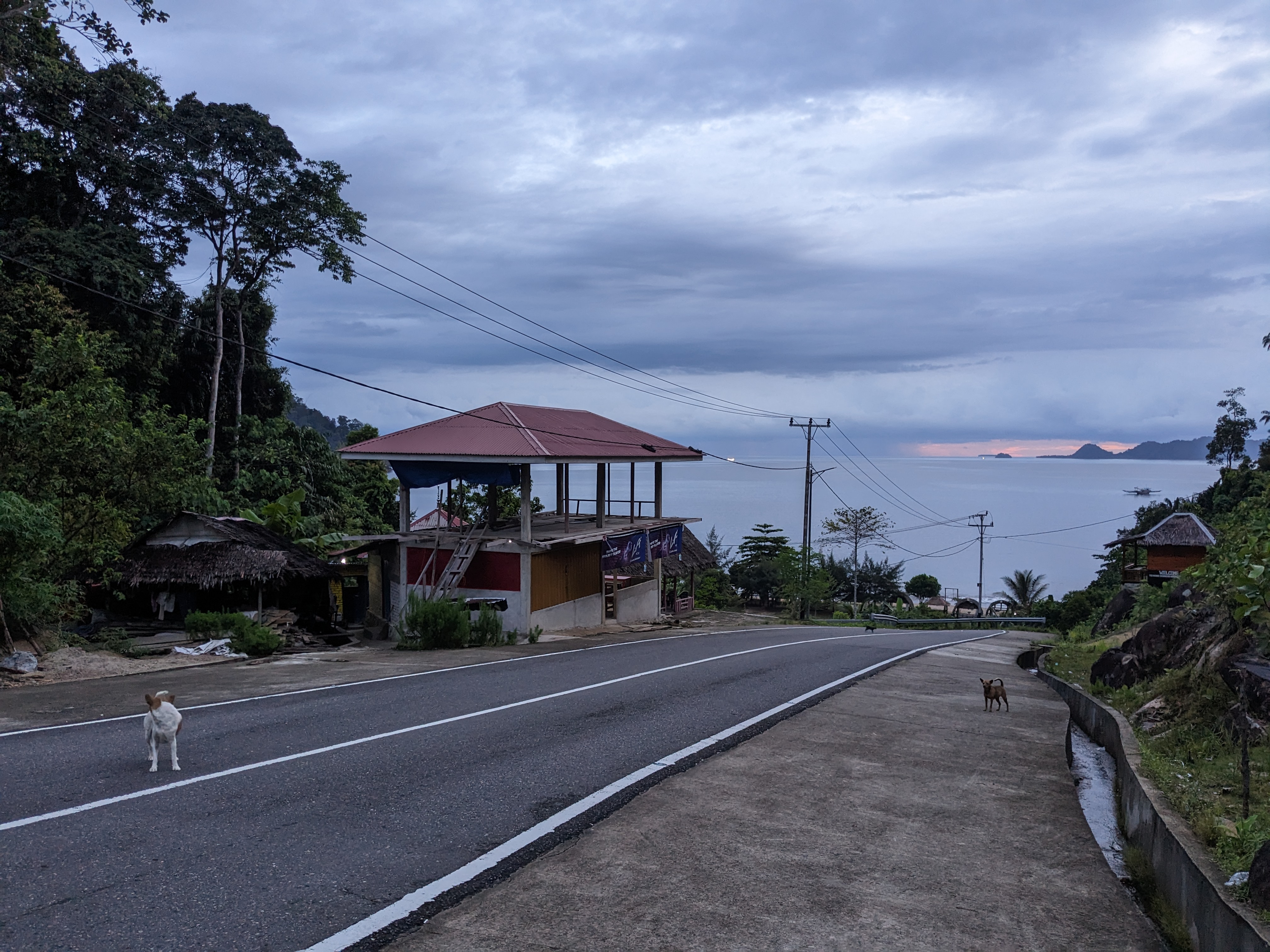

Continuing along the coast was challenging, with steep climbs and rainstorms. One afternoon, I accepted an offer to sleep at a restaurant at 2pm deciding not to venture out into the relentless rain at all. This may have been a mistake as despite the place being quite during the day, it became filled in the evening with a lively atmosphere of coffee-drinking patrons playing cards late into the night.


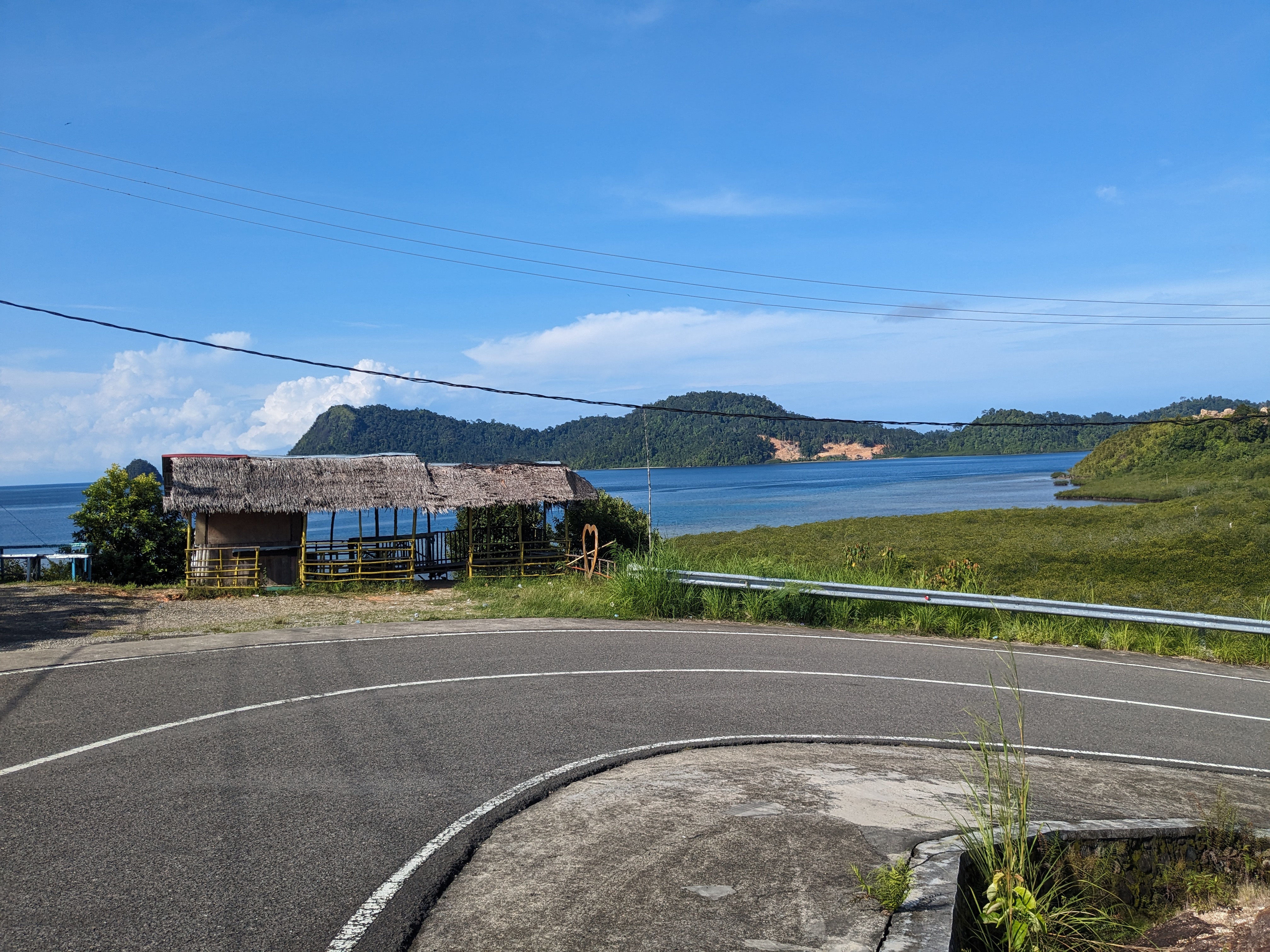
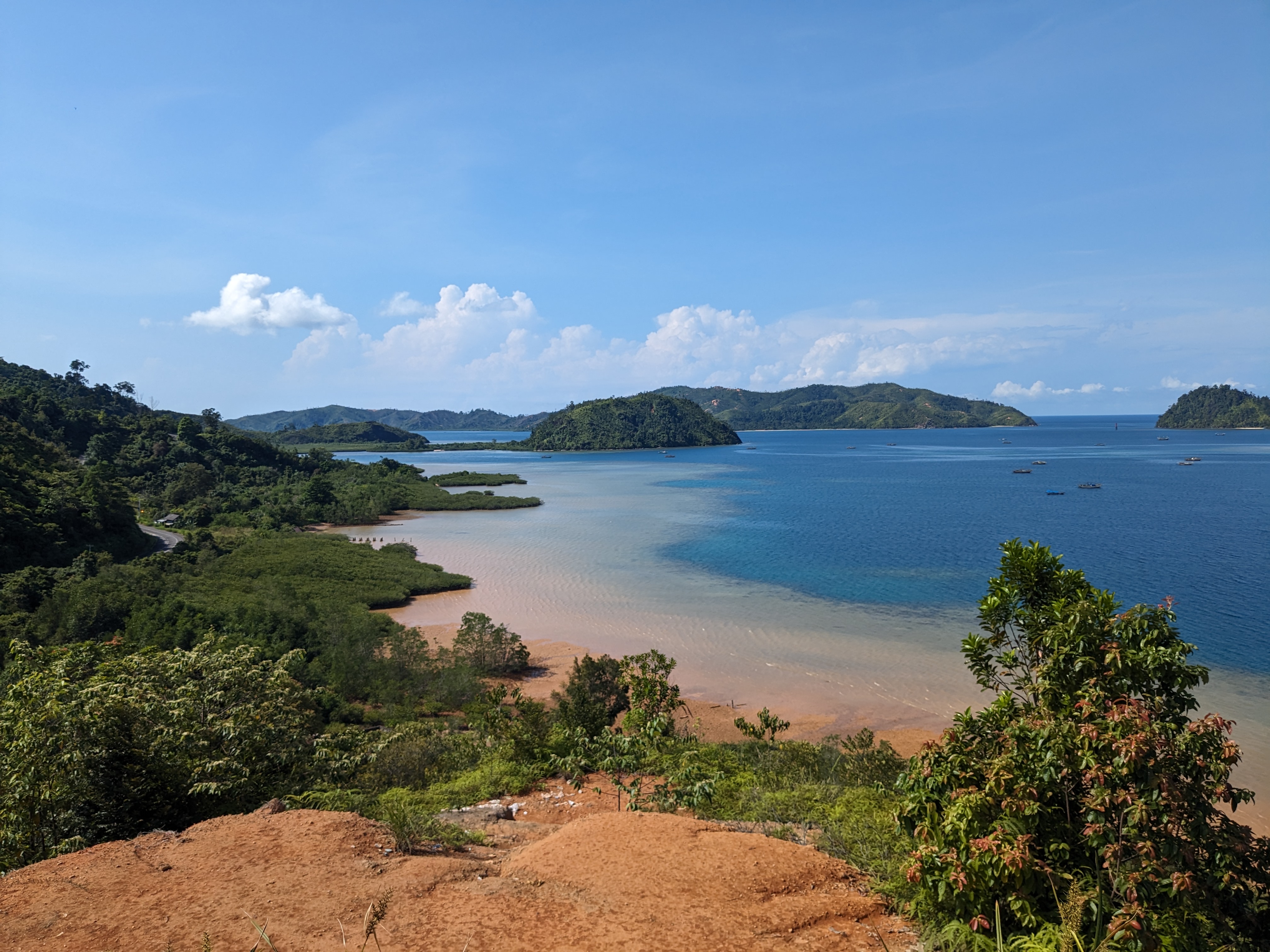

Rejoining the main road, I continued along the coast for three more days sleeping on a beautiful beach one night.

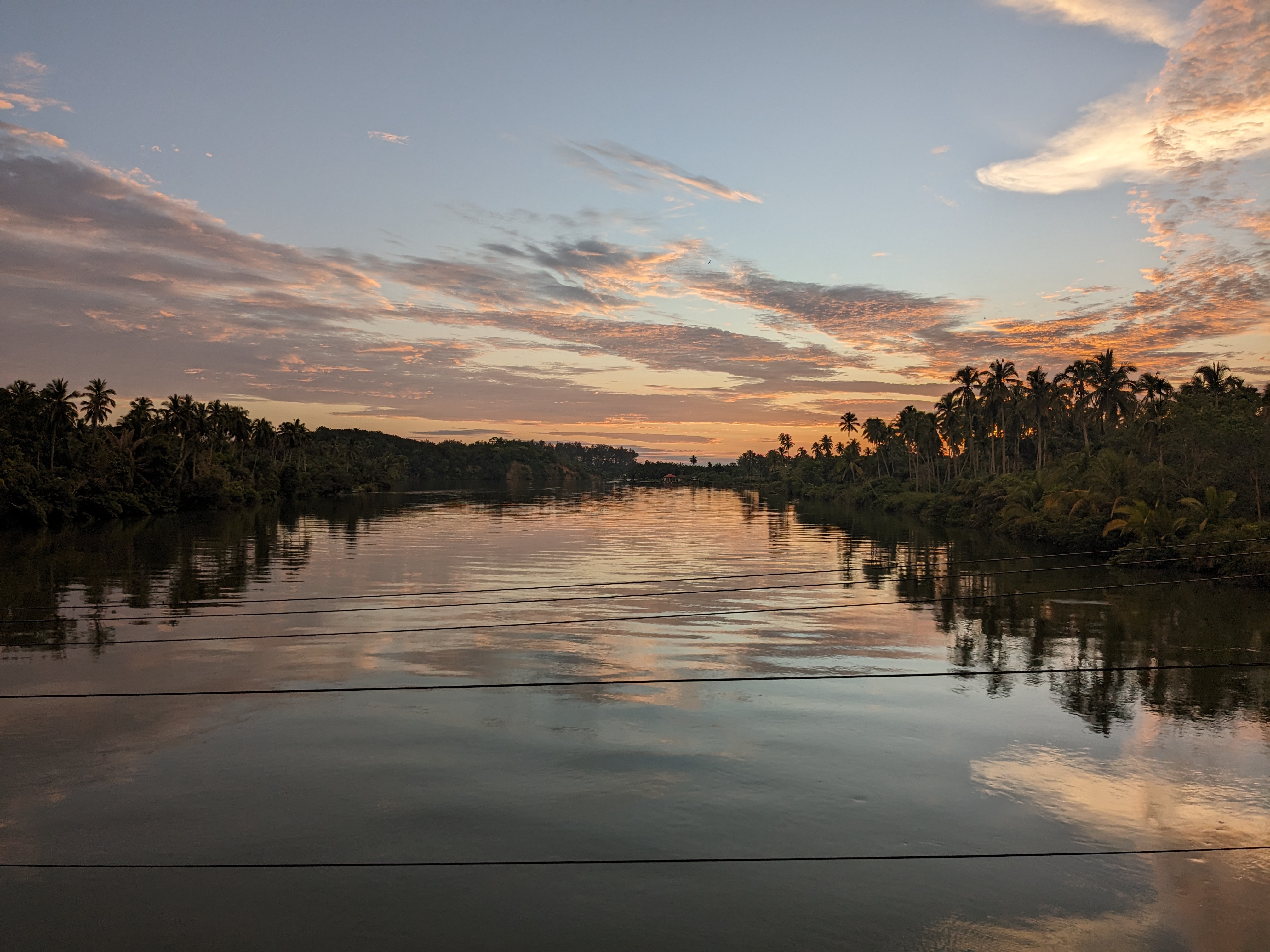


From the city of Bengkulu, I took a 20-hour bus ride to Bandar Lampung. This bus was quite nice and kept interesting with buskers getting on at the start of towns playing a song then hopping off at the other end of the town.


After leaving the bus, I rode for a few hours to the southern point of Sumatra then caught a ferry costing only £2 for the two-hour journey to the island of Java.
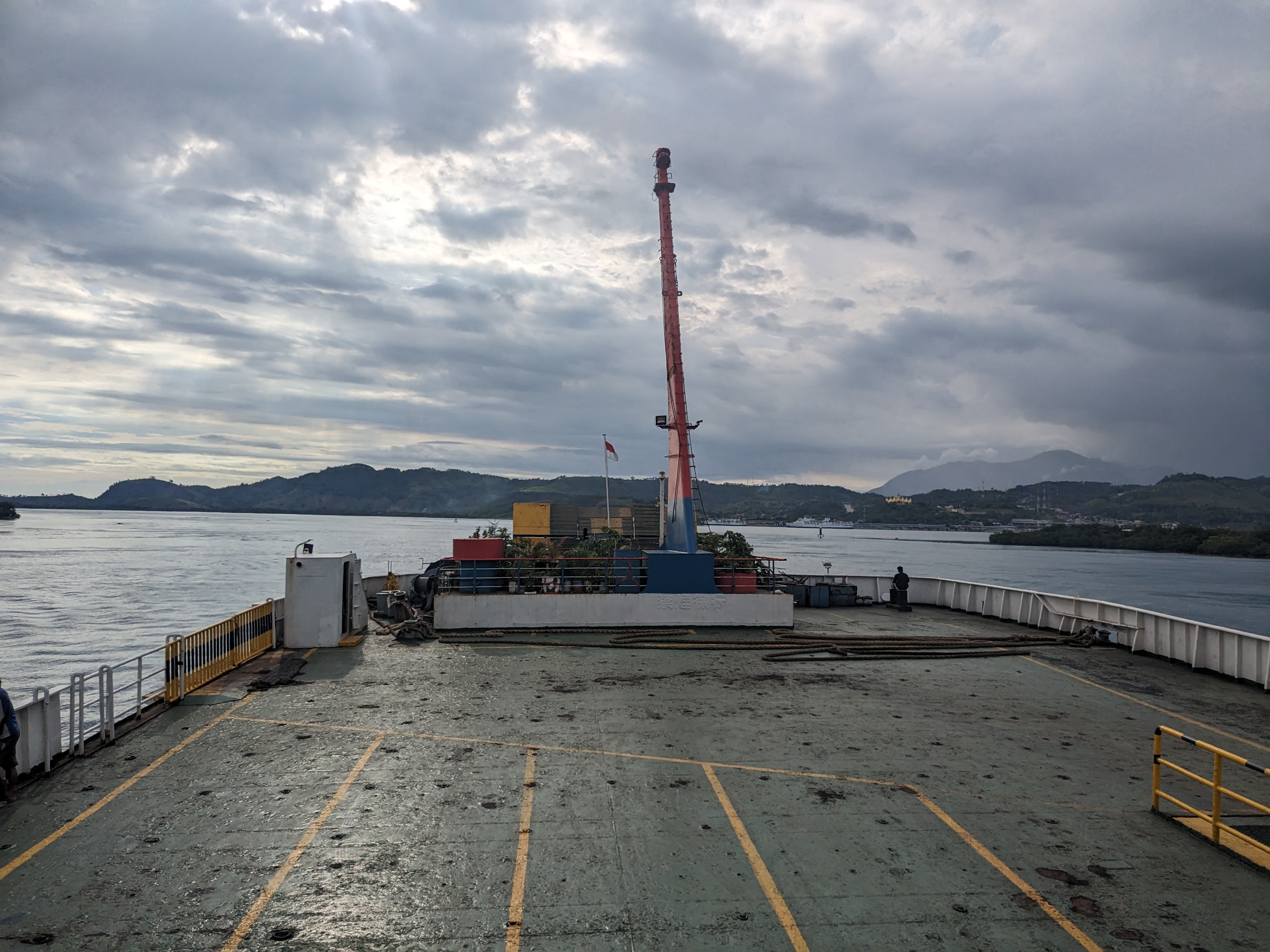

While Sumatra didn’t match my wilderness expectations, it offered a rich cultural experience. The food has been great but incredibly spicy, something that took me a week to get used to. I’ve really enjoyed the very sweet black coffee and I’ll remember the generosity of the people who have been wonderful.



